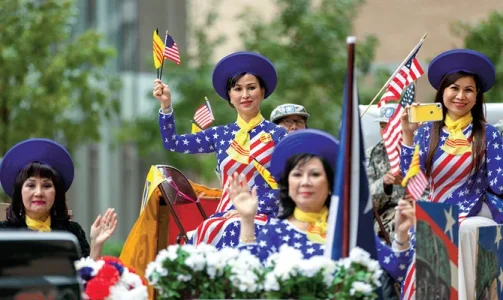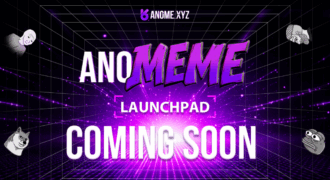The face of America is changing—literally and figuratively. What was once described as a “melting pot” has evolved into something far more complex and dynamic: a mosaic of identities, languages, and cultures that are redefining what it means to be American. In the 21st century, diversity is no longer just a demographic reality—it’s a defining force shaping the nation’s politics, economy, and culture.
From bustling urban centers to small-town communities, the transformation is visible everywhere. The America of today doesn’t look like the one imagined in textbooks of the past—and that’s not just a matter of race or ethnicity, but of ideas, values, and vision.
A Nation in Transition
The U.S. Census tells a story of profound demographic change. For the first time in history, white Americans are projected to make up less than half of the population within the next two decades. Meanwhile, Hispanic, Black, Asian, Indigenous, and multiracial communities are growing faster than ever.
In cities like Houston, Los Angeles, and New York, multiculturalism is the norm. But even in places once considered homogenous—Midwestern towns, Southern suburbs, rural counties—the picture is shifting. Immigrant families, interethnic marriages, and the rise of second- and third-generation Americans are weaving new threads into the nation’s social fabric.
This transformation is not a fleeting trend—it’s structural, generational, and irreversible. America is becoming a truly pluralistic society, where no single group holds a monopoly on what it means to be “mainstream.”
From Melting Pot to Mosaic
The old idea of the “melting pot” implied assimilation: newcomers would gradually blend into a single, unified culture. But the reality of modern America is more like a mosaic, where each piece retains its unique color while contributing to a larger, more vibrant picture.
Cultural hybridity—music, food, fashion, language—is now the heartbeat of American identity. K-pop concerts sell out in Chicago; taco trucks park next to Korean BBQ stalls in Dallas; African-American, Latino, and Asian influencers dominate social media platforms once dominated by mainstream Western culture.
This fusion doesn’t erase differences—it celebrates them. Diversity has become a source of creativity, not conflict. Yet, it also brings challenges: questions about representation, inclusion, and equity are being debated with greater urgency than ever.
Politics in a Multicultural Era
Demographics drive politics—and America’s changing population is rewriting the political map.
Immigrant communities, once on the margins of power, now play decisive roles in elections. Latino voters have become a key swing group in states like Arizona, Nevada, and Florida. Asian-American voter turnout has surged in recent years, reshaping suburban districts and city politics.
At the same time, generational diversity within minority groups challenges old assumptions. Young Americans of color are not only participating in democracy—they’re redefining it. Movements for racial justice, gender equality, and immigration reform reflect a broader demand for a system that mirrors the country’s real diversity.
But progress is not linear. The same forces that celebrate diversity also provoke resistance. Populist rhetoric, cultural backlash, and polarized media ecosystems have exposed fault lines in the American identity debate. The question that looms is whether diversity will unite or divide the nation.
Economic Power and the New Workforce
Beyond politics, America’s economic engine is being powered by diversity. Immigrants and minority-owned businesses contribute trillions to GDP annually. According to the U.S. Small Business Administration, one in five entrepreneurs today is foreign-born.
In Silicon Valley, innovation thrives on multicultural teams. In Hollywood, global talent has redefined storytelling. From fashion to finance, diverse voices are driving fresh ideas and new markets.
Corporate America, too, has taken notice. Diversity, equity, and inclusion (DEI) initiatives have moved from buzzwords to boardroom imperatives. Companies recognize that a workforce reflective of society is not just a moral good—it’s a competitive advantage.
However, economic disparities persist. Wage gaps, underrepresentation in leadership, and systemic barriers still hinder full equity. True inclusion, many argue, requires not just opportunity but ownership—ensuring all communities share in the nation’s prosperity.
Cultural Evolution: Identity in the Digital Age
Social media has amplified diverse voices like never before. The platforms that once homogenized culture are now arenas of representation and resistance. From Black Twitter to Indigenous TikTok creators to Asian-American filmmakers, digital spaces are rewriting narratives of identity.
But these same platforms also expose cultural divides. Misinformation, hate speech, and digital bias continue to shape how communities perceive one another. The struggle for visibility and authenticity in the digital age mirrors the larger struggle for recognition in the real world.
The cultural conversation has moved beyond mere “diversity” to deeper questions of belonging. What does it mean to be American when identity itself is fluid—when an individual might identify with multiple heritages, languages, or orientations? The answer, perhaps, lies in the freedom to be all of them at once.
Education and the Next Generation
In classrooms across the country, diversity is reshaping education from the ground up. Today’s students are the most racially and ethnically diverse generation in U.S. history. Multilingual programs, inclusive curricula, and cultural studies are redefining how young Americans learn about themselves and their country.
Educators face a delicate balance—teaching shared history while honoring multiple perspectives. The debates over what should be taught in schools, from racial history to gender identity, are part of a larger struggle over national identity.
But amid these debates, one truth stands firm: the next generation is growing up more connected, empathetic, and globally aware than any before it. For them, diversity isn’t a political statement—it’s simply reality.
Challenges on the Road to Inclusion
America’s diversity is both its strength and its test. Discrimination, inequality, and political polarization continue to cast shadows over progress. Hate crimes against racial and religious minorities, anti-immigrant rhetoric, and systemic bias remain persistent issues.
Yet, history shows resilience. Every wave of immigration, every civil rights movement, and every generational shift has brought the nation closer to its founding ideal—E pluribus unum, “out of many, one.” The struggle for inclusion is not a detour in American history—it is the story of America itself.
Redefining the American Dream
The American Dream is no longer a single story—it’s millions of overlapping ones. The idea that success belongs to anyone willing to work for it now includes those once excluded from the narrative. The children of immigrants are CEOs, lawmakers, artists, and scientists. Rural and urban, native-born and foreign, America’s new dreamers are expanding the boundaries of possibility.
This transformation is messy, vibrant, and at times uncomfortable—but it is undeniably powerful. The nation’s strength has always been its capacity to reinvent itself, and today’s reinvention is as profound as any in its past.
A Tapestry Still in the Making
The changing face of America is not about erasing what came before—it’s about adding new colors, textures, and stories to a shared tapestry. Diversity is not a threat to unity; it’s the foundation of a new one.
In this century, America’s greatness will not be measured by its conformity but by its capacity for coexistence. The challenge—and the opportunity—lies in recognizing that difference does not divide a nation. It defines it.
The story of 21st-century America is still being written, and its authors come from every corner of the world.



